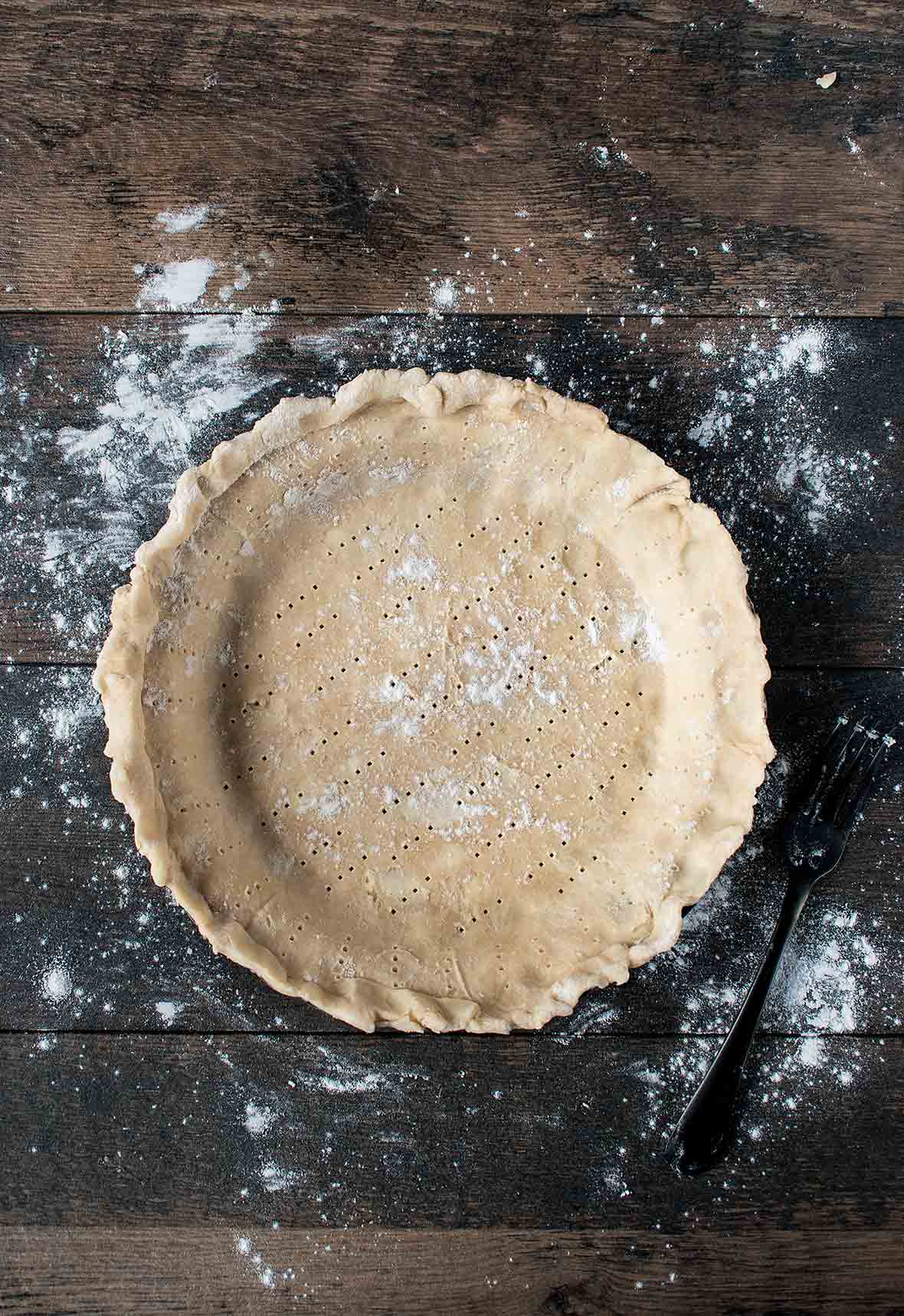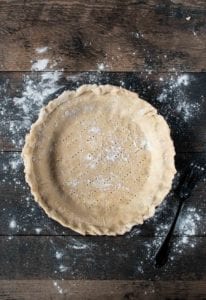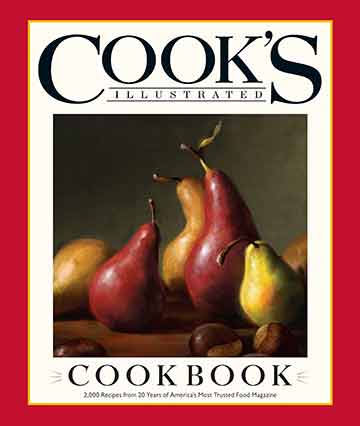

Lard and Butter Pie Crust
Ingredients
- 2 1/2 cups all-purpose flour, stashed in the freezer until cold
- 1 teaspoon salt
- 2 tablespoons granulated sugar
- 13 tablespoons (6 1/2 oz) cold unsalted butter, cut into 1/2-inch (12-mm) cubes
- 8 tablespoons (4 oz) cold lard, cut into 1/2-inch (12-mm) cubes
- 4 to 6 tablespoons ice water
Instructions
- In a food processor fitted with metal blade, combine the flour, salt, and sugar.
- Toss in the butter cubes and process with five 1-second pulses.
- Toss the cold lard into the processor and continue pulsing until the butter is no larger than the size of peas and the flour is pale yellow and resembles coarse cornmeal, about four 1-second pulses. Dump the flour mixture into a medium bowl.
- Sprinkle 3 tablespoons of ice water over the flour mixture. Working quickly, use a fork to fluff and mix thoroughly. Squeeze a handful of dough—if it doesn’t stick together, add the remaining water, 1 tablespoon at a time.
- Handling the dough as little as possible, divide it into 2 balls, one slightly larger than the other. Flatten each portion of dough into 6-inch discs. Wrap in plastic wrap and refrigerate for 30 minutes.
- On a lightly floured work surface, roll each portion of dough to slightly larger than your pie plate. Carefully drape the slightly smaller portion of dough in the plate. If desired, prick the bottom crust with the tines of a fork, if desired.
- Fill with your favorite pie filling recipe, top with the remaining portion of dough and crimp the edges. Trim any excess dough that hangs over the edge. Freeze the unbaked pie for up to several weeks or transfer it to the fridge for at least 30 minutes before baking according to your recipe. Originally published January 9, 2002.

Nutrition
Nutrition information is automatically calculated, so should only be used as an approximation.
Recipe Testers’ Reviews
This was one of the best pie crusts I’ve ever tasted. It was also one of the easiest to make. With this recipe in your arsenal, you’ll always get great compliments on your pies.











Great pie crust! I followed the recipe exactly and it turned out perfectly.
Wonderful, Jenine!
I’ve made this crust recipe several times now and it is THE best! Just wondering though, because I’m kinda lazy at times, since the food processor is used to mix the butter and lard into the flour can it continue to be used when adding the ice water?
Ann, the concern is the dough will become overworked and not flaky. Using the fork prevents that.
Is this ratio of flour to fat right? it’s almost 1:1, which seems like too much. This crust oozed butter all over my sheet tray that I had my pie on. Any tips for me?
Hi Karen and I’m incredibly sorry to hear that you had this experience. I’ve made this recipe literally countless times the last 15 years (since long before we asked recipe testers to try it and published it on our site) and I have had the same thing happen a couple times. The ratios are actually correct. When things went south for me it was either because I was in a hurry and didn’t take the time to have the butter and lard chilled through and through OR I got distracted and let the pastry sit out for a while in a warm kitchen before filling the pie and sliding it in the oven. I’m wondering if perhaps either of this circumstances played into your baking? Also, in the summer, when the kitchen is warm and humid, I often also chill the flour just so everything remains as cold as possible. Pastry can be finicky and the most important thing is that everything be cold. I got in the habit of keeping butter and lard in the freezer and once I began to do that I never had the issue again. Kindly let me know your thoughts. Everyone who’s had this pie crust in my home has raved about it and many have requested the recipe. It melds that magnificent butteriness we love in pie crust yet has that flakiness that your grandma’s pie crust probably did. I hope you get to experience that!